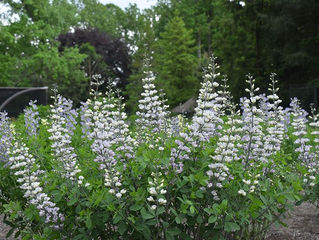

Swamp Milkweed (Asclepias Incarnata)
Swamp Milkweed is crucial to the survival of Monarch butterflies. Adult Monarchs only lay their eggs on Milkweed as this is the only food...


Lead Plant (Amorpha Canescens)
The Lead Plant is great for dry, sunny areas in naturalized or native gardens and is adaptable to a wide range of soil structures. This...


Anise Hyssop (Agastache Foeniculum)
Anise Hyssop (Blue Giant Hyssop) is a great addition to any garden and is an effective attractant for bumblebees. Every time we are...


White Wild Indigo (Baptesia Lactea)
White Wild Indigo is a taller native, reaching 3 to 5’ high and produces long white flowers above bluish green foliage in late spring....


MPLS Drainage Problems Worse than Unusable Turf Areas
Have you ever considered what happens with the storm-water from the impervious sufaces of the urban landscape?? We have. We place a...


Wild Geranium (Geranium Maculatum)
Everyone knows about the annual Geraniums that are so wildly popular, however here is a native Geranium that adds delicate purple color...


Wild Lupine (Lupinus Perennis)
Wild Lupine has a very unique leaf structure, being palmately compounded and sends attractive bluish-purple flower blooms above the...


Blanket Flower (Gaillardia Aristata)
This Minnesota native is one of our favorite summer blooming plants that we use in the landscape. The flowers are very large (2-4”) and...


Spiderwort (Tradenscantia Occidentalis)
This Minnesota native begins blooming in late May and produces purple flowers throughout most of June and July. Spiderwort can be found...


Columbine (Aquilegia Canadensis)
Columbine is a very versatile plant because it can tolerate all types of soils if they are well drained and can be grown in full sun to...

























